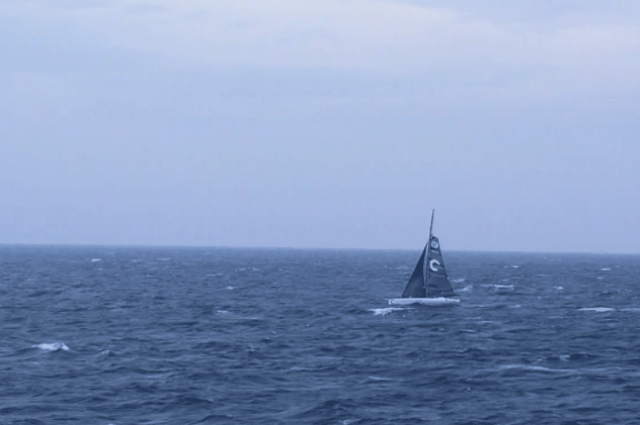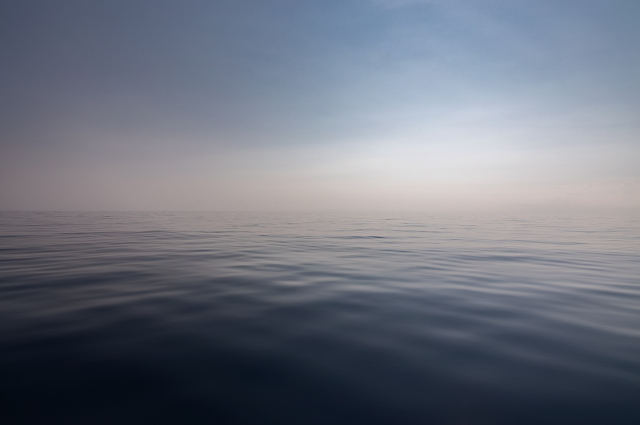
Image by Castro Marina
In the vast expanse of the Pacific Ocean, far away from any bustling city, lies a point on our planet that can claim the title of the "most remote place on Earth." This location is referred to as Point Nemo, and it occupies a distinct and exceptional place in our comprehension of Earth's geographical isolation. In this article, we will delve into the mysteries and significance of Point Nemo, exploring why it is such a remarkable location.
The term "Nemo" derives from Latin, meaning "no one," a fitting reflection of the profound remoteness of this location, where no human presence is found for thousands of miles in every direction.
What is Point Nemo?
Point Nemo, often referred to as the "oceanic pole of inaccessibility," is located at 48°52.6′S 123°23.6′W in the South Pacific Ocean. It is, in essence, the farthest point from any land on Earth. The name "Nemo" is derived from Jules Verne's character, Captain Nemo, who explored the depths of the ocean in the novel "20,000 Leagues Under the Sea." The term was coined by Hrvoje Lukatela, a Croatian-Canadian survey engineer in 1992 (He never physically ventured to the location but instead relied on technology to precisely compute its coordinates. His insight was rooted in the three-dimensionality of the Earth, leading him to the deduction that the most remote oceanic point must be equidistant from three distinct coastlines).
This is a location where land is absent in every direction for thousands of miles. It stands as the most remote place on Earth, characterized by water temperatures just above freezing, vast expanses of desolation, and a reputation as a resting place for spacecraft. Moreover, it serves as a scientific research laboratory and is rumoured to be a sanctuary for mythical sea creatures. Remarkably, the nearest humans to Point Nemo are the astronauts residing aboard the International Space Station.
The Inaccessibility of Point Nemo
To understand the inaccessibility of Point Nemo, you only need to look at its coordinates. The closest land to this remote point is Ducie Island, which is part of the Pitcairn Islands and lies approximately 2,688 kilometres (1,670 miles) away. The other pair of coastlines equidistant from Point Nemo consists of Motu Nui, positioned to the northeast near Easter Island, and Maher Island, found to the south near the larger Siple Island, off the coast of Marie Byrd Land in Antarctica. In other words, if you were to find yourself at Point Nemo, you would be farther from civilization than anyone else on Earth.
Getting to Point Nemo is a considerable challenge. The remoteness of this location means that any expedition requires careful planning and extensive resources. Furthermore, the harsh oceanic conditions, unpredictable weather, and the absence of nearby support make it a daunting endeavour.
Significance of Point Nemo
Ideal for Spacecraft Disposal: One of the primary reasons Point Nemo gained prominence is its usefulness as a spacecraft graveyard. Space agencies worldwide utilize this site as a secure repository for retired or malfunctioning satellites that orbit Earth. Leaving these satellites in orbit would exacerbate the escalating issue of space debris, so they employ the remaining traces of fuel on these spacecraft to guide them precisely to this location in the ocean.
NASA, for instance, has plans to intentionally crash the International Space Station into this designated resting place sometime near 2030. Remarkably, this method is both the safest and most cost-effective means of disposal. If space agencies were to allow spacecraft debris to linger in Earth's orbit, it could lead to collisions with operational satellites or, even worse, pose a threat to populated regions on our planet.
It has gained recognition as a "spacecraft graveyard" within the international space community, with numerous spacecraft interred in its depths. Notable among these are several cargo ships from the European Space Agency, over 140 Russian Soyuz spacecraft, and even the Soviet-era MIR space station.
Minimal Human Presence: Point Nemo represents the epitome of isolation. There are no research stations, no inhabitants, and no commercial shipping routes near this location. It is an area where nature reigns supreme, and human influence is virtually non-existent.
The coordinates of Point Nemo lie within the South Pacific Gyre, a massive, constantly swirling oceanic current that obstructs the influx of nutrient-rich water into this region. The absence of these essential nutrients makes it utterly unfeasible for most forms of marine life to thrive here.
Scientific Research: Despite its isolation, Point Nemo has become a focal point for scientific research. Oceanographers study the deep waters surrounding it, and the area is of particular interest to those researching ocean currents and marine life in the open ocean. Scientists have recorded the presence of various bacteria and tiny crabs residing in the vicinity of the seafloor's volcanic vents at Point Nemo.
During the 1990s, an enigmatic sound was detected at a location less than 1,250 miles to the east of Point Nemo. This sound, known as "the Bloop," surpassed the volume of a blue whale's call, sparking conjecture about its origin, with some entertaining the notion of an unidentified sea creature. Oceanographers were deeply intrigued by this phenomenon. However, after a period of uncertainty, the National Oceanic and Atmospheric Administration (NOAA) determined that the Bloop was, in fact, the acoustic signature of a colossal iceberg undergoing fracturing and splitting.
Conclusion

Image by Dim Hou from Pixabay
In our ever-connected world, Point Nemo serves as a reminder of the untamed beauty and isolation that still exists on our planet—a place where the serenity of the open ocean meets the pursuit of scientific knowledge. It may be the most remote place on Earth, but it is a crucial location for understanding our world's remoteness.
As we continue to explore and study our planet, Point Nemo will undoubtedly remain a beacon of scientific curiosity and a symbol of the untouched wilderness that still thrives in the depths of the Pacific Ocean.
Point Nemo, as the oceanic pole of inaccessibility, shares its distinction with other remote poles on our planet. The Northern pole of inaccessibility, often referred to as the Arctic pole of inaccessibility, can be located on the pack ice of the Arctic Ocean, situated at the greatest distance from any landmass. Meanwhile, the Southern pole of inaccessibility holds its position as the farthest point from the Southern Ocean and is linked to a former Soviet research station in Antarctica.
